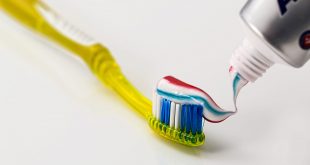By Edward Mims
Most of us do not remember a world before antibiotics. It was only in the 1940s that penicillin, the first truly effective antibiotic, began to be used in a significant way. Ask your grandparents or an octogenarian neighbor what it was like when antibiotics were not readily available. It was a time when it was common to be afflicted, maimed or even killed by diseases that could be cured by a simple seven-day course of these “miracle drugs” today. However, unless great care is taken in the prescription and use of our current generation of antibiotics, our modern “antibiotics era” may soon end.
History tells us that in the Napoleonic wars of the early 1800s there were 8 times as many deaths from disease as from battles wounds. During the American Civil War two-thirds of deaths were attributed to disease. Even in World War I, the diaries and letters of doctors described many injuries contaminated by soil that would become gangrenous and require amputation of an arm or leg. Nurses in field hospitals said that it was impossible to get away from the smell of the infected wounds. The casualty lists were full of soldiers whose wounds had gone septic and for whom the treatments were wholly inadequate.
Before antibiotics, diseases also wrought a toll on communities and families during peacetime. In the pre-antibiotic era, maternal deaths from childbirth were 50 times as prevalent in hospitals. Bacterial meningitis was 90% fatal. Strep throat, tuberculosis, and whooping cough were frequently deadly infections. These were days when “a paper-cut could kill”. To slow the return of those days, it is important that we reduce the spread of antibiotic resistance by becoming less dependent on them.
What do we do to reduce our dependence on antibiotics? As our grandparents knew, simple hygiene and cleanliness regimens, such as washing hands and thoroughly washing foods and cooking surfaces is critical to reducing the chance of a bacterial infection. Adhering to these simple methods may be an important way to reduce disease without the use of antibiotics. Sanitation and a clean water supply are also an excellent way to reduce disease. America has one of the safest water supplies in the world, but some other countries are not so lucky. Approximately 1800 deaths of children under five are linked to contaminated water and poor hygiene. It is important that we take a proactive approach disease by trying to prevent it in the first place.
The beginning of the antibiotic era came with the discovery of penicillin in the 1930s, but it is quickly coming to an end with the overuse and abuse of our remaining effective antibiotics. Historically, we see that life without antibiotics can literally mean no life at all for many.
http://cooper.imb.uq.edu.au/files/Life%20without%20antibiotics.pdf
http://blogs.biomedcentral.com/on-medicine/2014/07/02/what-would-we-do-without-antibiotics/
https://www.thelancet.com/pdfs/journals/lancet/PIIS0140-6736(02)11807-1.pdf
https://www.worldwar1centennial.org/index.php/diseases-in-world-war-i.html
https://www.weforum.org/agenda/2016/08/antibiotics-childbirth-and-maternal-and-infant-mortality
https://www.cdc.gov/healthywater/drinking/public/water_diseases.html
 Tempus Magazine By Students, For Students
Tempus Magazine By Students, For Students 



